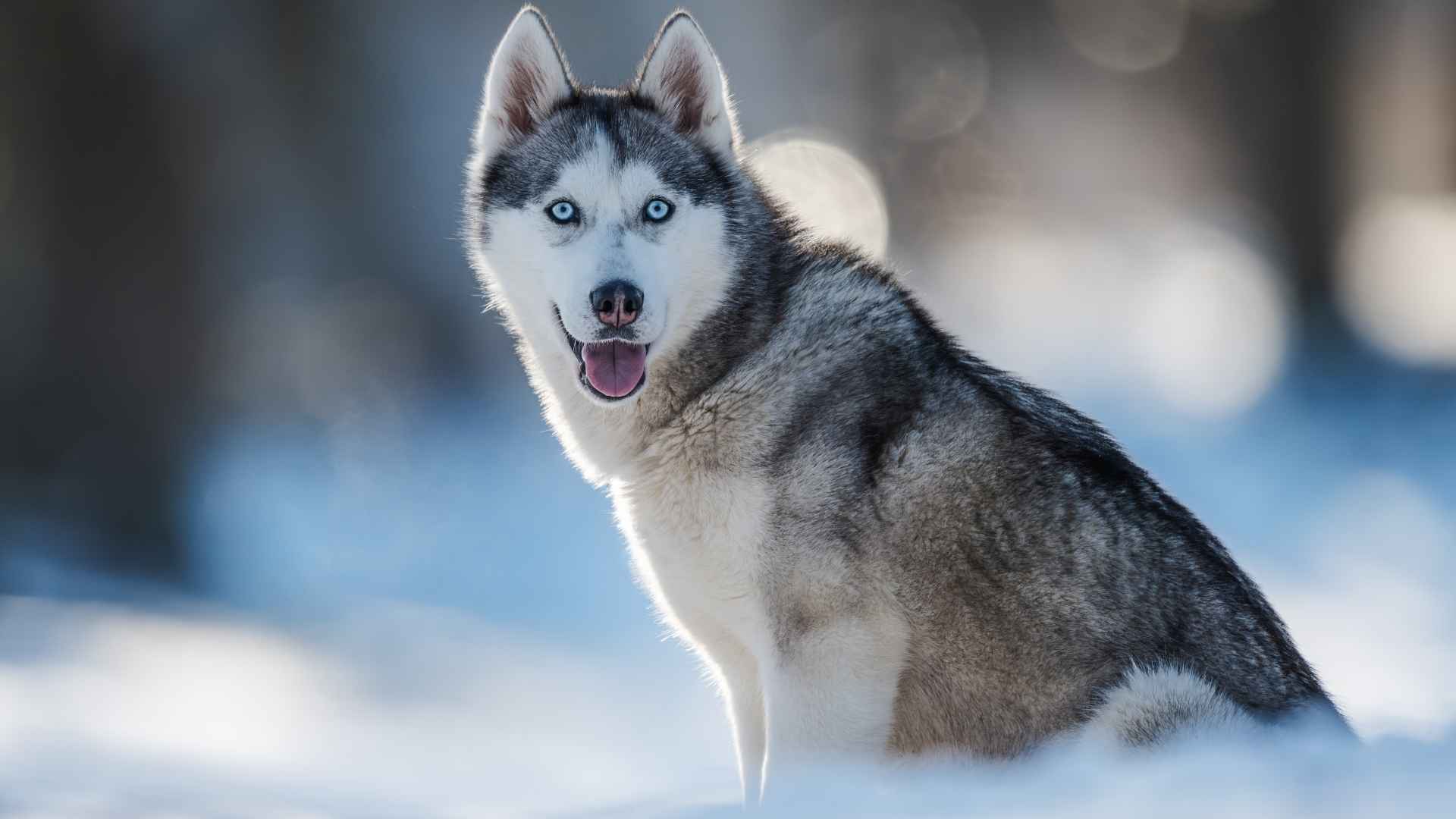A dog is already an incredible companion; they cuddle, play, and brighten your day. But when that loyal friend comes with striking blue eyes? That’s a show-stopper! If you’re dreaming of a pup with those unforgettable blue peepers, this guide is here to help you find the perfect match.
Blue eyes in dogs aren’t just rare; they’re mesmerizing. One glance from those bright blue eyes can melt your heart. Breeds like the iconic Siberian Husky are famous for their ice-blue gaze, while others get this stunning trait from genetics, like blue merle or piebald patterns.
In this guide, we’ll explore the dog breeds that are known for their stunning blue eyes, the genes behind them, and what makes these dogs so special. Whether you’re a first-time dog owner or a lifelong pup lover, get ready to discover some blue-eyed dogs.
Dog Breeds with Blue Eyes
1. Siberian Husky
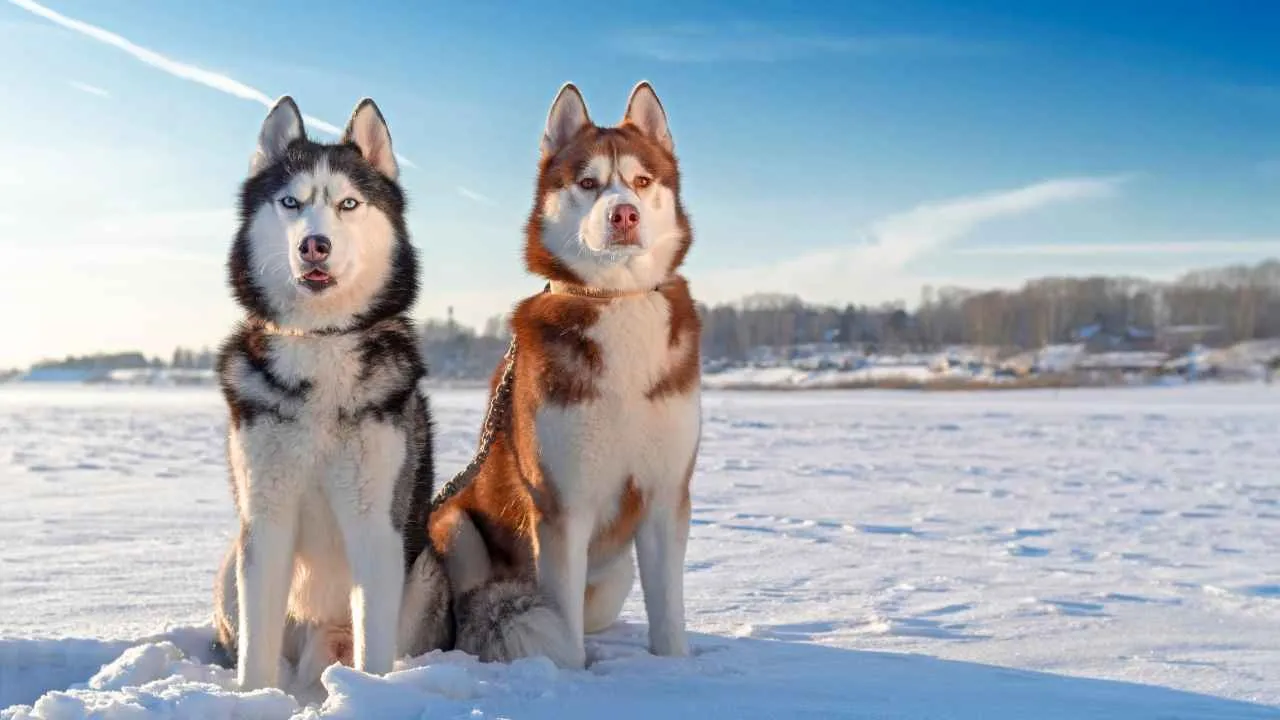
Size: 21.5 -23.5 inches
Weight: 45-60 pounds
Lifespan: 12-14 years
Temperament: Loyal, outgoing, mischievous
When you hear siberian husky, you think of those haunting ice blue eyes. This isn’t just hype, it’s a signature trait deeply rooted in their DNA. The eye color likely comes from a genetic mutation near the ALX4 gene on canine chromosome 18, which is why Huskies frequently show blue eyes.
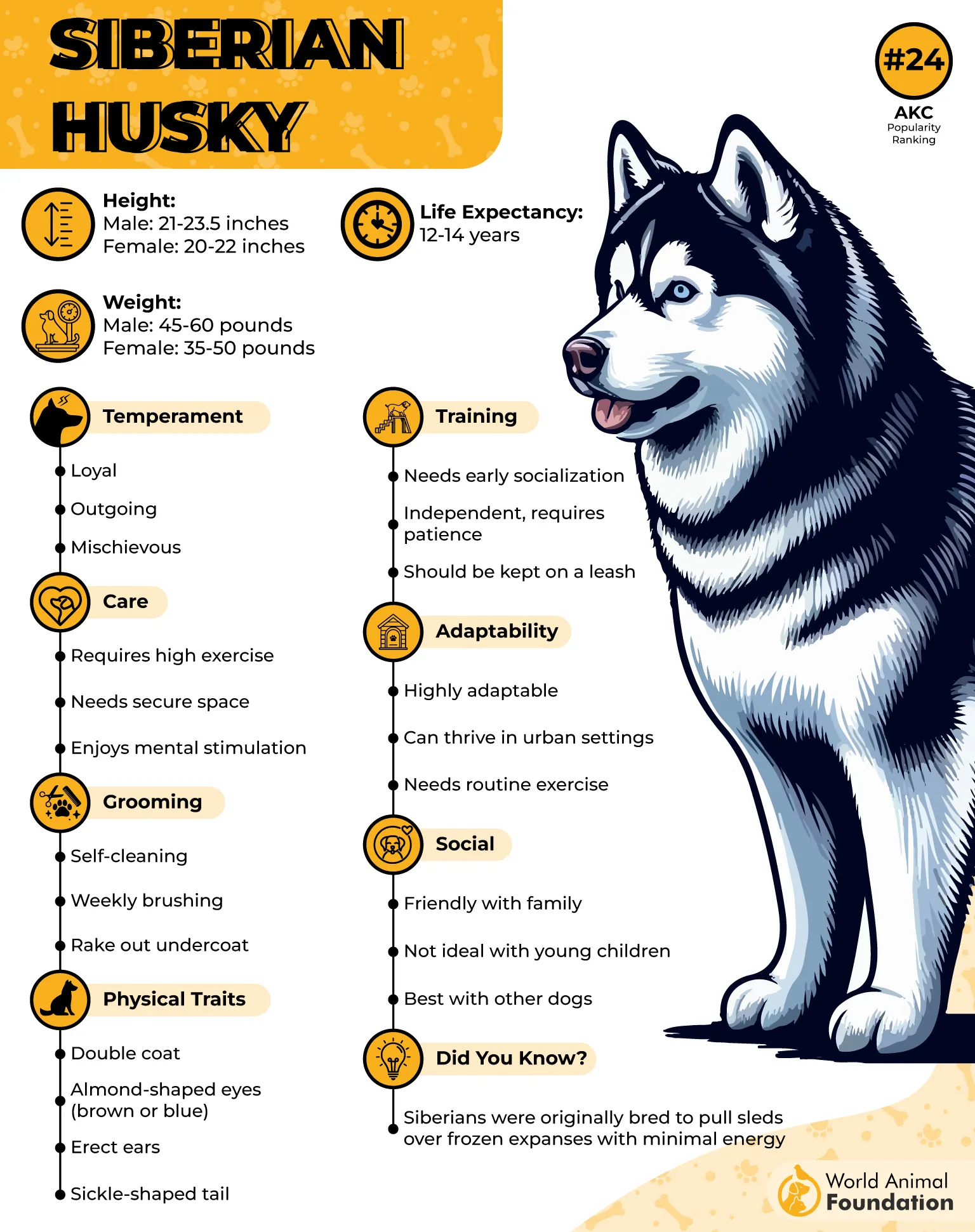
According to Britannica, a 2023 genetic study of Balto, the heroic sled dog from the 1925 Great Race of Mercy, revealed that he shares ancestry with Tibetan Mastiffs, Greenland sled dogs, and dogs from Vietnam.
Bred to pull sleds across frozen landscapes, Huskies pack high energy and athleticism. Their piercing gaze isn’t just for show; this herding breed has deep instincts for recall and rigor. Those eyes are bold, full of confidence, and often have a light amber or steel blue hue.
Huskies demand more than admiration. They need vigorous mental stimulation, running, agility, and cold-weather playdates.
2. Australian Shepherd
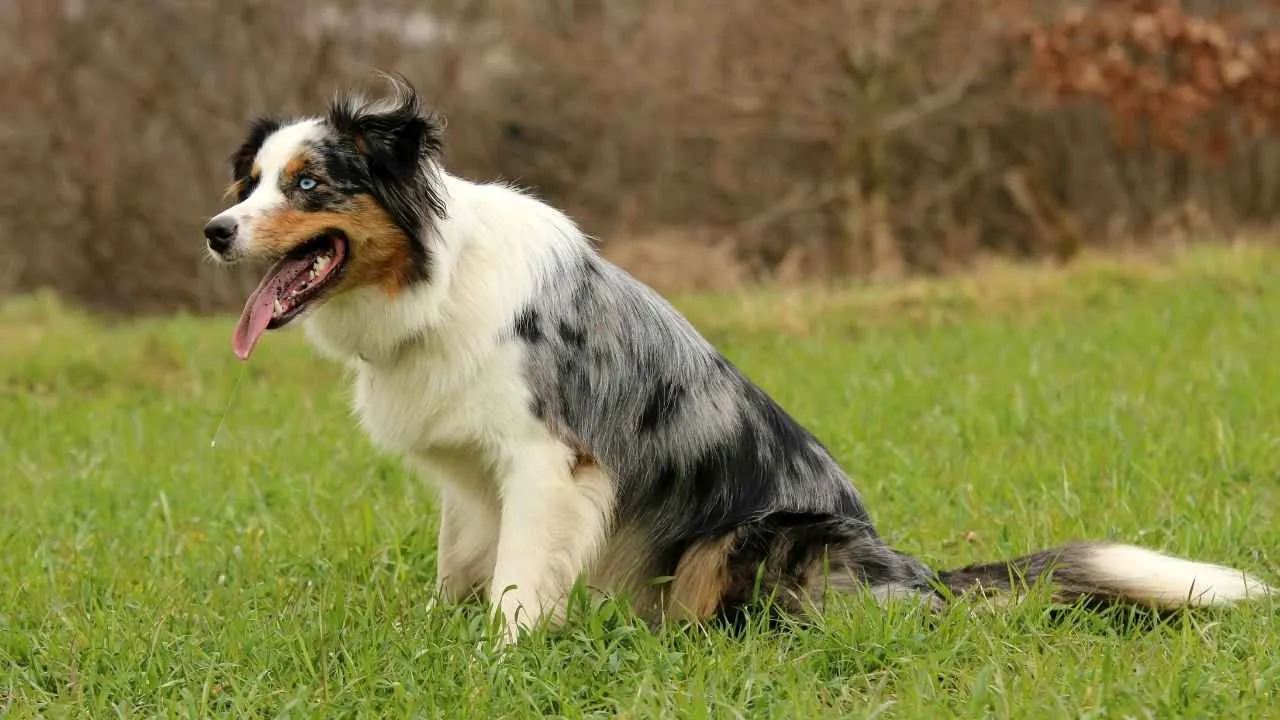
Size: 20-23 inches
Weight: 50-60 pounds
Lifespan: 12-15 years
Temperament: Smart, work-oriented, exuberant
Known for dazzling merle coat patterns, the Australian Shepherd earns serious flash points in the show ring and home life. In fact, the merle gene often throws in one or two flawless blue eyes, sometimes even a combination of blue and brown called heterochromia.
Originally bred to help herd livestock on Western ranches. Aussies match work ethic with popular good looks. Their eyes can hypnotize, but their stamina is high, so they need regular hikes, herding, or frisbee tournaments to stay grounded.
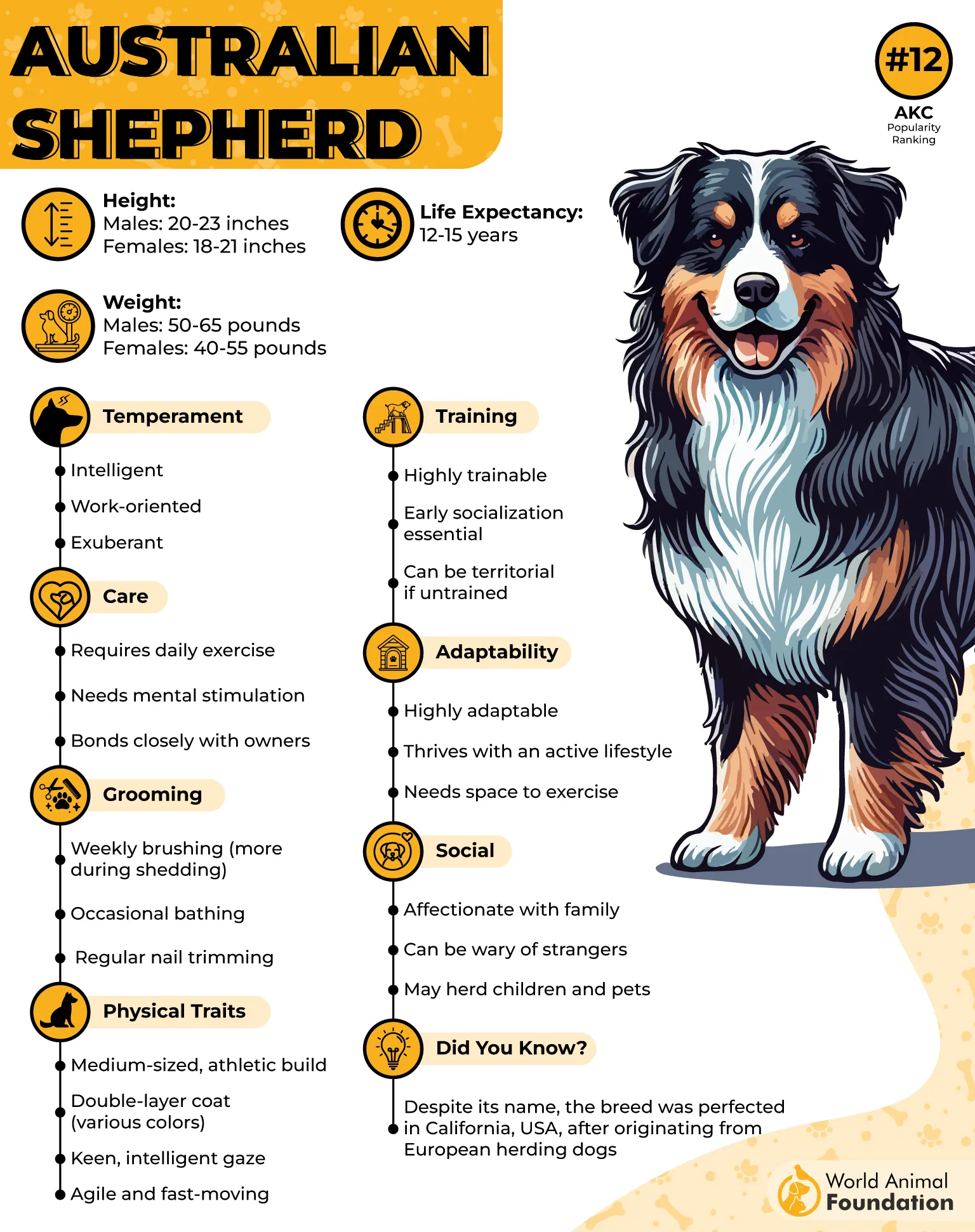
Purina explains that as Australian Shepherds age, their coat coloring darkens, becoming more defined and “pure” in appearance
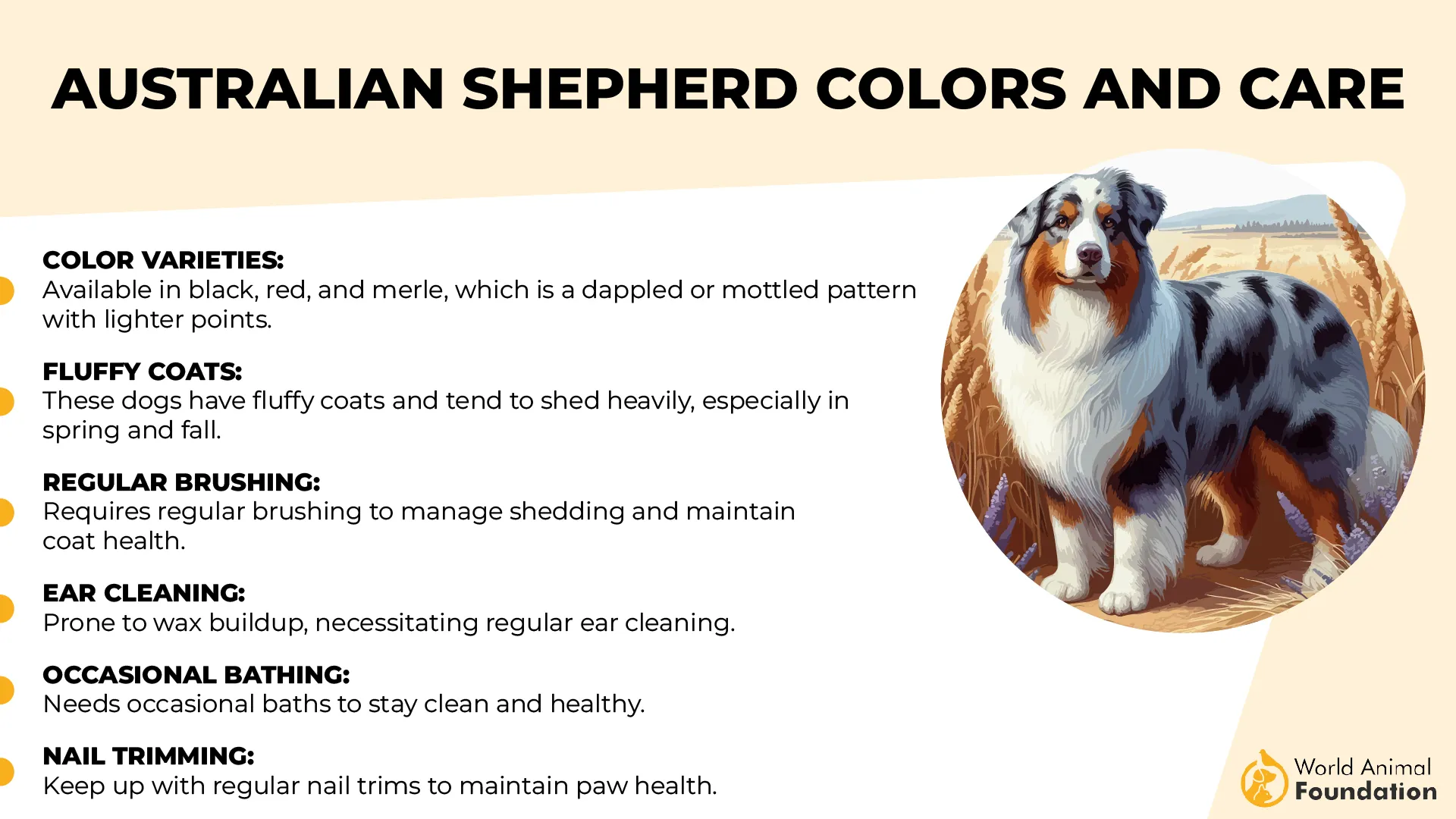
Their personality blends smart and affectionate, and you will get a highly affectionate family dog that is equally alert. But they are not couch potatoes, mental drills like scent games curb boredom.
3. Catahoula Leopard Dog
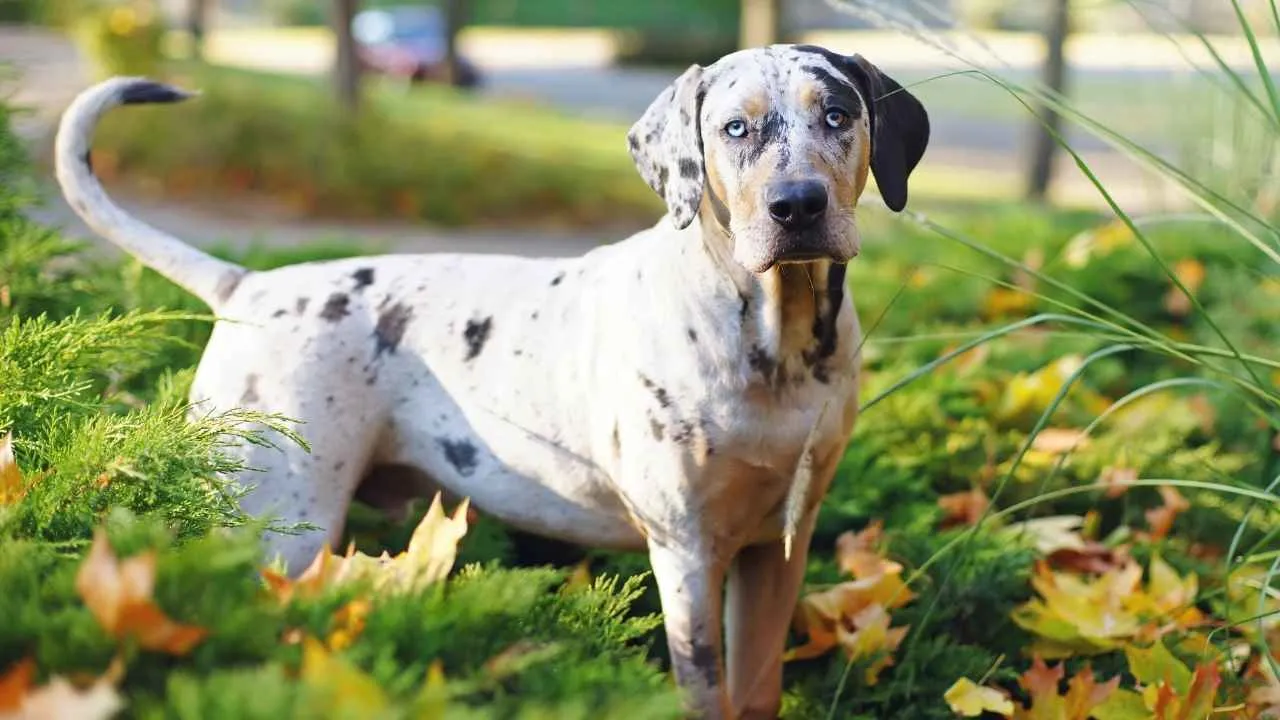
Size: 22-24 inches
Weight: 50-95 pounds
Lifespan:10-14 years
Temperament: Loyal, independent, watchful
Many Catahoula leopard dogs sport blue eyes or mismatched sets, earned through dominant genes linked to coat and coat patterns. You will often see white spots, gray merle, and both eyes crystal blue in these dogs.
As AKC notes, Catahoula Leopard Dogs are incredibly versatile, being used as stock dogs, bay dogs, tree dogs, watchdogs, guard dogs, and loyal family companions.
Originally bred to hunt badgers and gather wild hogs, these dogs aren’t just shy about being tough. They are active family dogs that demand space to run and mental tasks like tracking games or puzzles, and fetch. Socialization is critical; those wild mental capacities need clear guidance.
They bring athleticism, loyalty, and a gaze that feels untamed yet profoundly attentive.
4. Border Collie
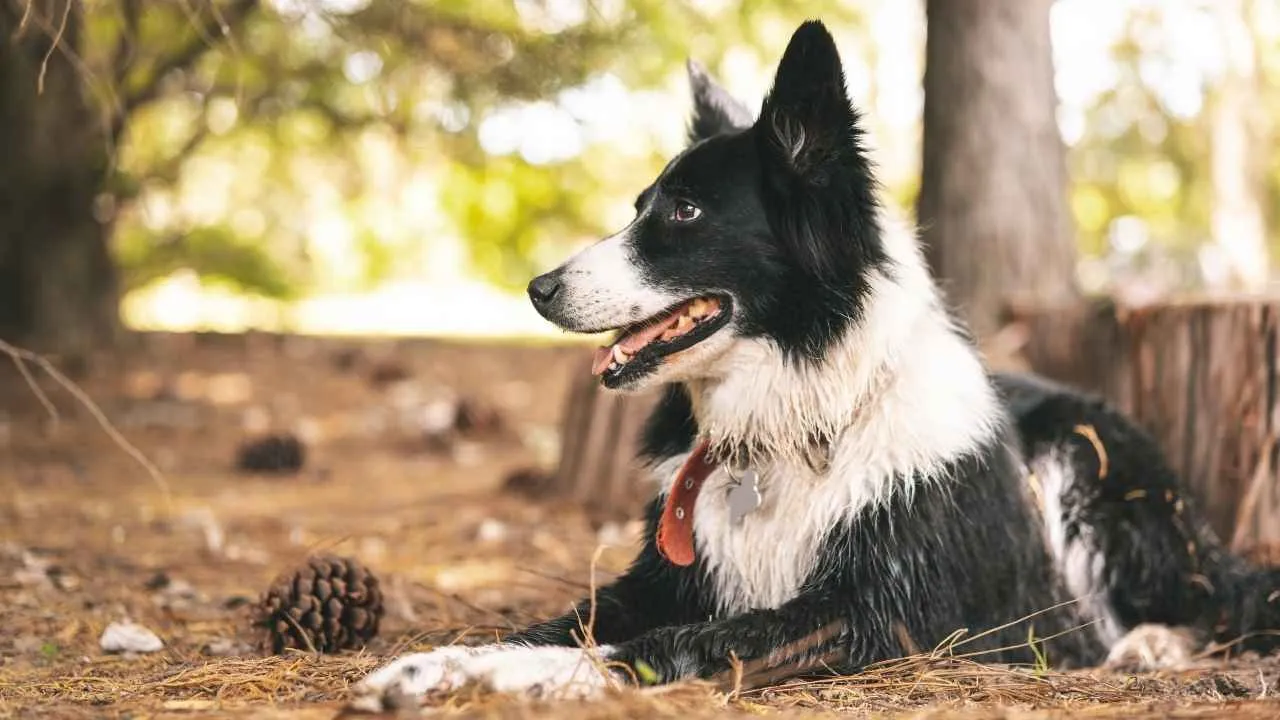
Size: 19-22 inches
Weight: 30-55 pounds
Lifespan: 12-15 years
Temperament: Energetic, affectionate, smart
Don’t underestimate those striking blue eyes; they are working overtime. In a Border Collie, blue eyes aren’t just decorative. They come tied to one of the most intelligent canine brains on the planet.
This herding dog doesn’t just chase tennis balls; it reads your moves, watches your eyes, and sometimes outsmarts your commands.
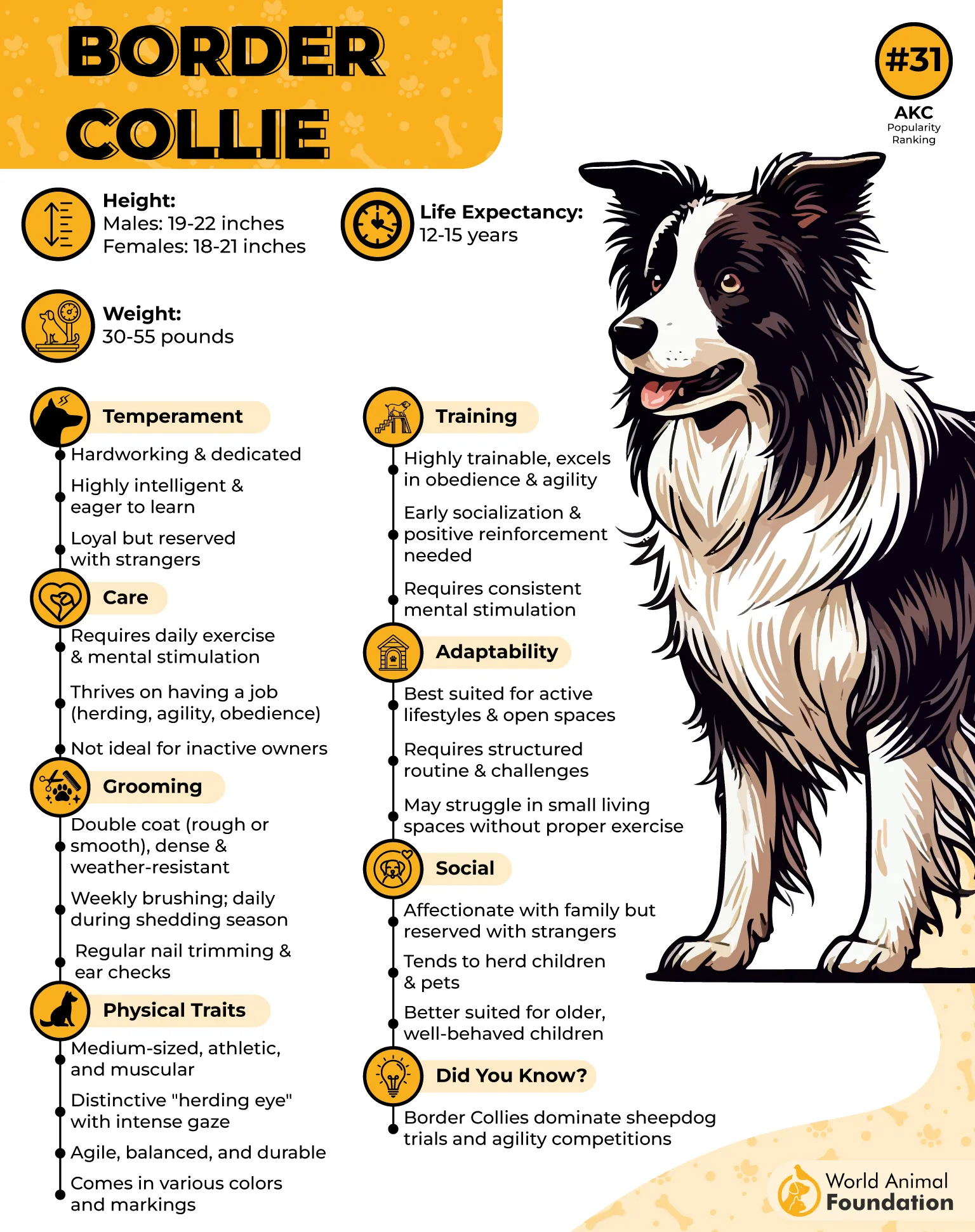
WebMD highlights that Border Collies are considered the world’s greatest herders, thanks to their stealthy movements, creeping stance, and sweeping runs that guide livestock with precision.
Originally bred along the English-Scottish border to control sheep, the Border Collie now wins hearts in suburban backyards and competitive dog sports. Their light blue eyes often come from merle coat patterns, though solid-coated Borders can also have this trait depending on lineage.
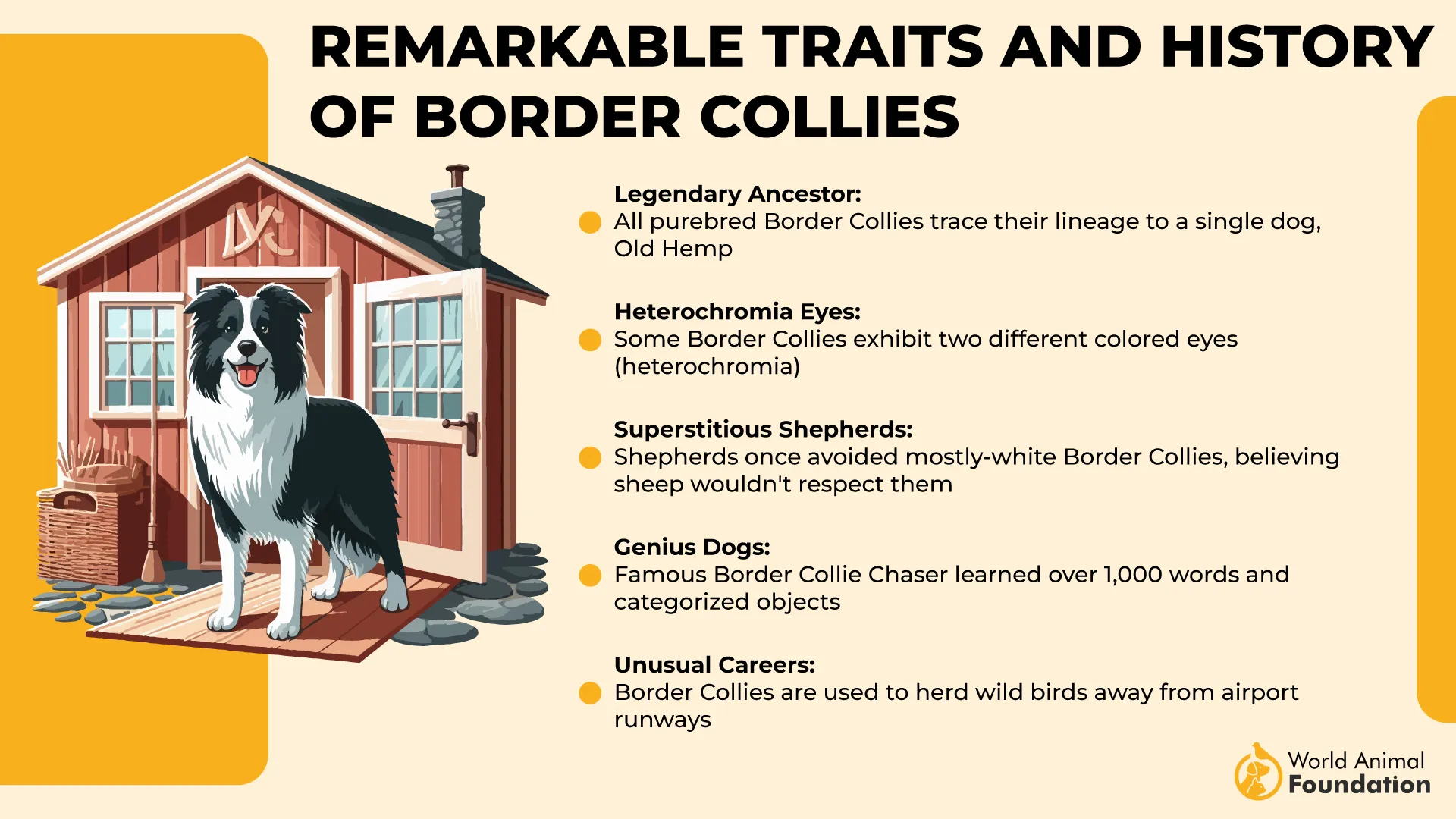
What trips them up? Boredom. These dogs thrive when they are working, so obedience training, scent work, or even agility courses to help them stay sharp and grounded.
5. Weimaraner
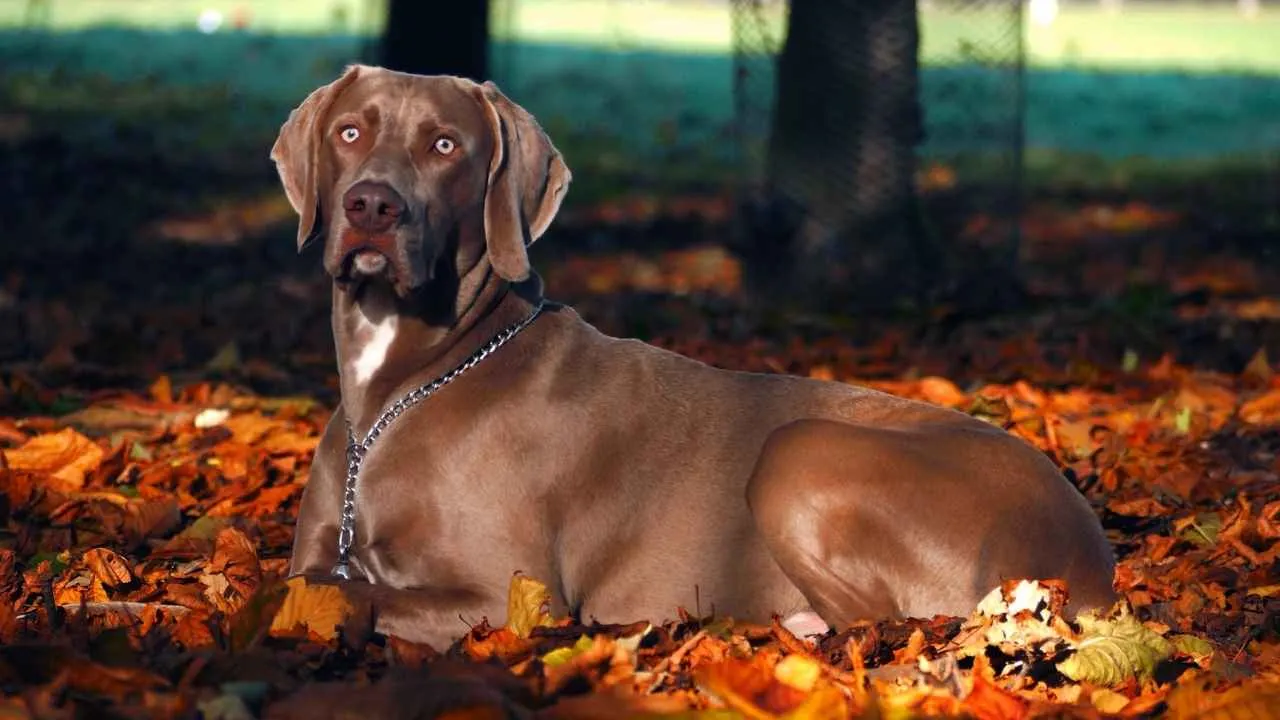
Size: 25-27 inches
Weight: 70-90 pounds
Lifespan: 10-13years
Temperament: Fearless, friendly, confident
Weimaraners have been called noble, athletic, and shadow-like, but it’s their blue eyes that usually shift to light ambers or grayish tones with age, but every once in a while, a Weimaraner keeps that hypnotic hue well into adulthood.
They have sleek silver-gray or mouse-gray coats, which earned them the nickname “gray ghost. This breed was originally bred for hunting big game in Germany. Their high stamina and sleek white coat make them a standout in the field. These dogs are loyal, follow you everywhere, and need to be involved in your day-to-day life.
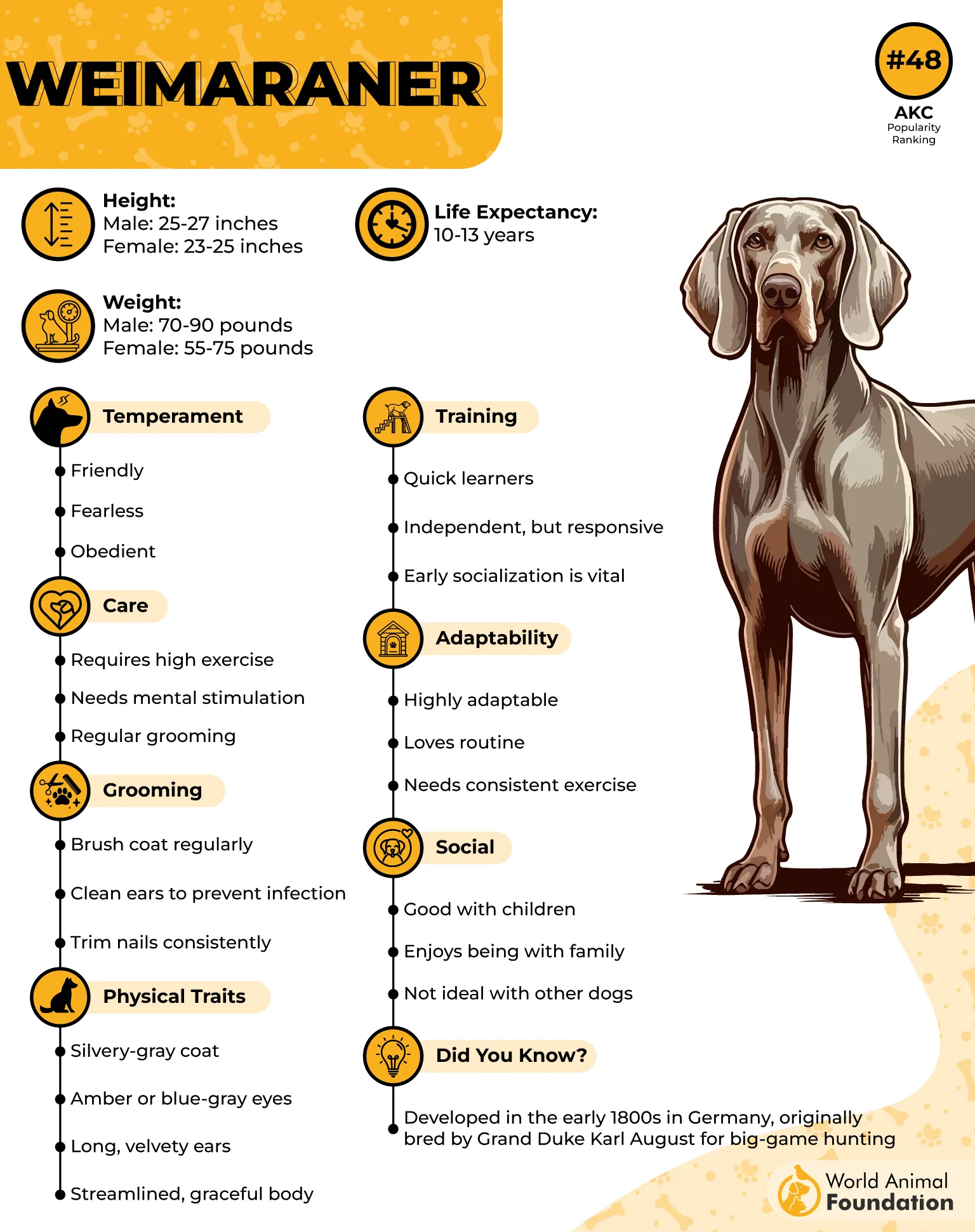
They need structure, affection, and freedom to move. With the right lifestyle, a Weimaraner stays elegant, healthy, and emotionally well-regulated into their senior eyes.
According to Hill’s Pet, in the 19th century, Weimaraners were exclusively owned by the Nobles of Weimar, who developed the breed that was originally called “Weimar Pointers” for hunting large game like boars and deer.
6. Cardigan Welsh Corgi
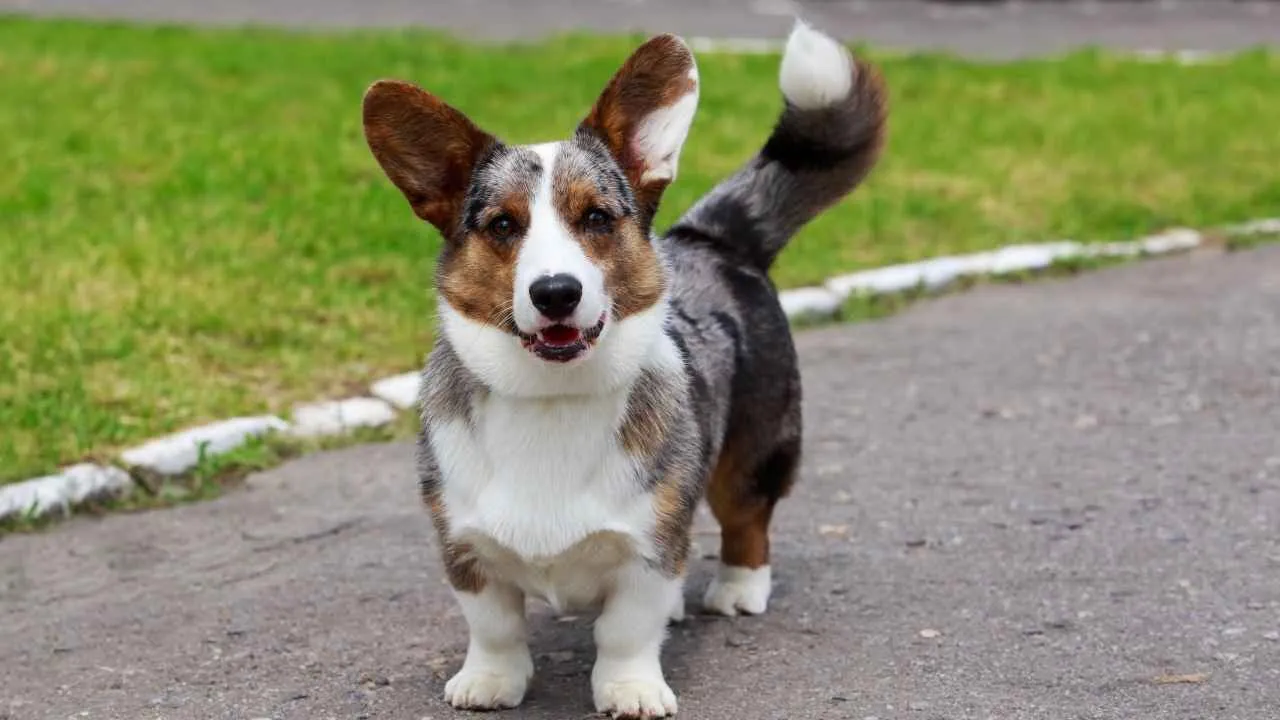
Size: 10.5 -12.5 inches
Weight: 30-38 pounds
Lifespan: 12-15 years
Temperament: Loyal, affectionate, smart
They are not the same as their Pembroke cousins. They have got long, foxy tails, merle coats, and yes, blue eyes can be downright arresting.
Though these herding dogs may look like they are all fun and waddle, don’t mistake short legs for low energy. Corgis are busybodies. Their energy output is impressive, especially considering their medium-sized frames. That said, they need only moderate exercise to stay fit, making them excellent choices for active but not athletic families.
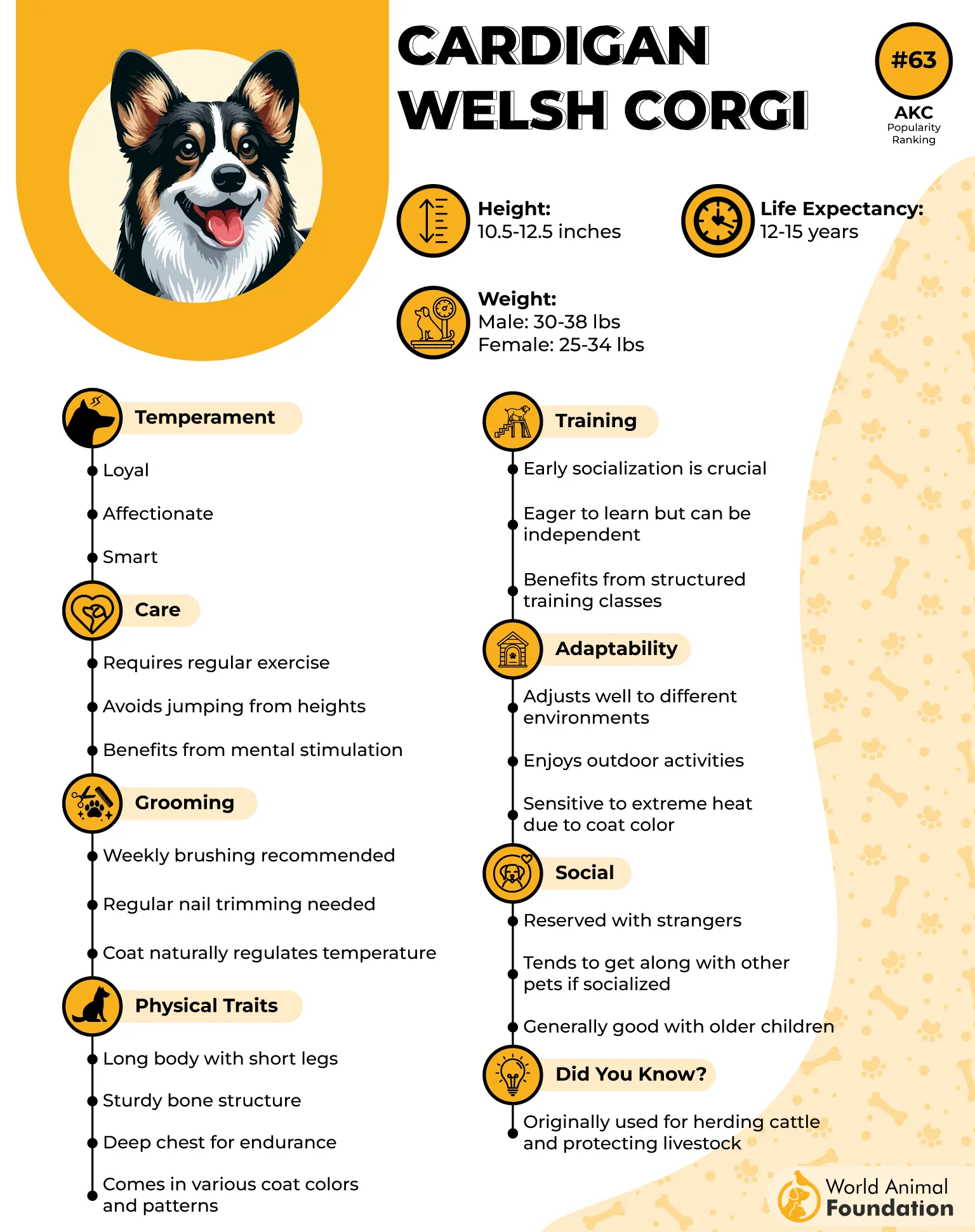
They may inherit their blue eyes through merle genes, but even non-merle Cardis can surprise you with one blue and one brown eye. They also tend to have a well-earned reputation for being emotionally intuitive, making them great family pets, especially for kids.
They can have joint issues if overfed, so monitored feeding and joint and dental care are the key. But overall, they are hardy dogs with big hearts and low drama and wrapped in a corgi-shaped package.
7. Great Dane
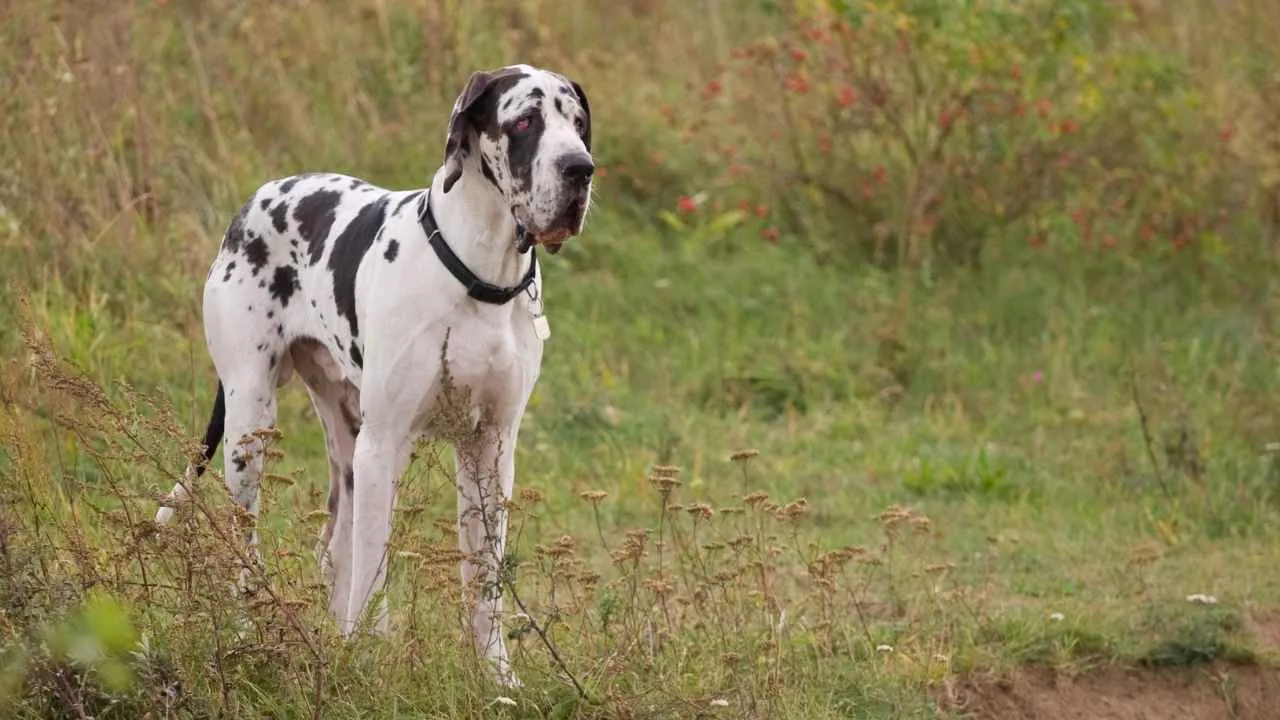
Size: 30-32 inches
Weight: 140-175 pounds
Lifespan: 7-10 years
Temperament: Friendly, patient, dependable
Despite their imposing size, Great Danes are surprisingly gentle. Their temperament is calm, affectionate, and people-oriented. In fact, many pet parents describe them as giant lap dogs. They thrive on companionship and do best when they are integrated into home life.
Now let’s talk health conditions. While Great Danes are not on the top list of breeds with the fewest vet visits, blue-eyed individuals within this breed often raise interesting genetic conversations around the merle gene.
When bred responsibly and monitored with periodic heart screenings and basic joint care, they can lead a steady and fulfilling life.
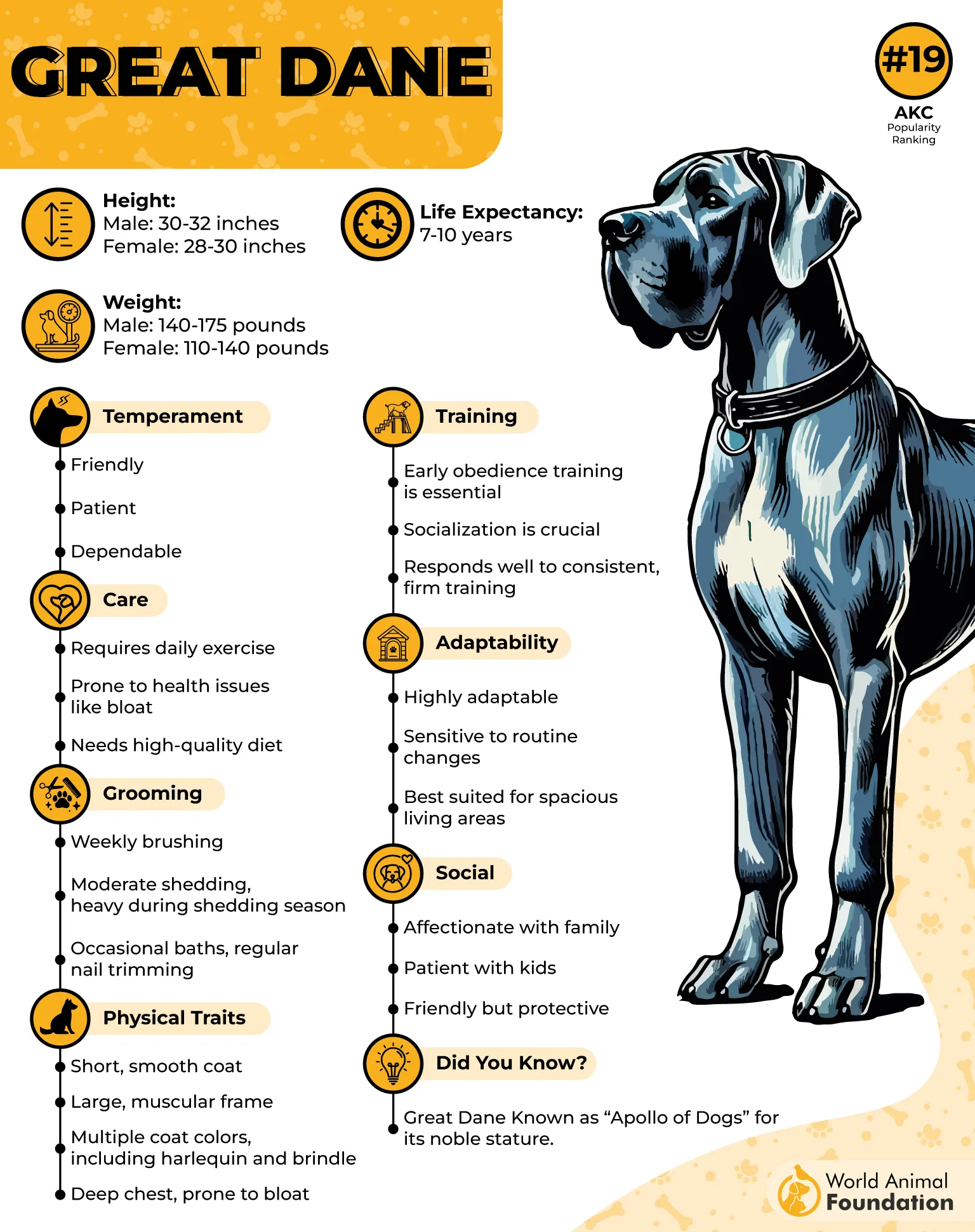
They are not high energy, which surprises many. A few brisk walks and some regular indoor play usually suffice. What do they need most? Emotional closeness and a soft place to stretch those long legs.
Conclusion
There’s something captivating about a dog with blue eyes; they hint at fascinating genetic stories and powerful heritages. As a pet parent, if you are drawn to the mystique of striking blue eyes, know that every blue-eyed breed comes with its own blend of needs. Some want mental stimulation, physical work, and others just want to spend time with you.
Whatever breed you choose, it’s all about fit rather than looks, so choose carefully. Let’s get you a new dog with those pretty blue eyes!


